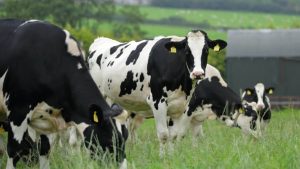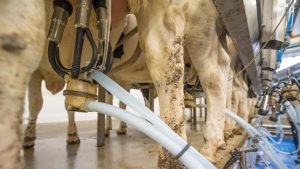
A new report by economists at Teagasc has forecast that fuel prices may fall slightly, but feed prices are likely to be higher.
While it is difficult to forecast how fertiliser prices will develop, it says that very little change is expected for the annual average fertiliser price for the fertiliser year, which starts in October and ends in September.
The uncertainties created by Russia’s invasion of Ukraine are likely to remain, it says.
‘Global economic growth rates are set to slow, with some regions moving into recession. This could have some negative impact on food demand,’ the report stated.
It predicts that milk prices are likely to fall in 2023 by 15%, as global milk production growth resumes and demand growth eases. The average milk price in 2023 should still be sufficient to cover the production cost increases experienced over the last 18 months. Nevertheless, margins will remain high in 2023 and there should be a return to growth in milk production of perhaps 4%. While dairy farm incomes are forecast to be lower in 2023, the forecast average dairy farm income of €104,000 would still be one of the highest recorded.
Cattle prices are forecast to increase in 2023 and particularly during the first quarter of the year. Stable volumes of beef production (domestically and in key export destinations) are expected to constrain rising cattle prices in the second half of 2023. The forecast is that average finished cattle prices will be 4% percent higher in 2023 and that young cattle prices will increase by 5% in 2023.
The availability of additional support under Pillar II of the new Cap will benefit cattle producers. Average incomes are forecast to rise on cattle farms in 2023, with an increase of 11% in prospect for cattle rearing farms to €9,700, and an increase of 2% for other cattle farms to €17,300.
Lamb prices are forecast to increase by 2%, on average, in 2023, but the average income on sheep farms in 2023 is forecast to decline by 2%, leaving the average income at just under €19,500.
Cereal prices are forecast to be lower in 2023. The high cereal yields achieved in 2022 are unlikely to be repeated in 2023. There is likely to be little relief on the cost side, but some additional support under the new Cap will provide some benefit, such as the Acres scheme and additional protein payments. Overall, the average tillage income in 2023 is forecast to fall by 48% to €33,000.
Pig prices are forecast to continue to improve in 2023. A 22% increase in pig prices is forecast and this would restore profitability in the sector to a more normal level. Pig production is expected to fall slightly in 2023 as an outcome of the contraction of the sow herd that occurred in 2022.
Meanwhile, examining this year, the average Irish dairy farm income is likely to be up by 50% on 2021. This increase would take the average dairy farm income figure to €148,000. Irish dairy farmers have benefitted from a 44% increase in milk prices due to the lack of growth in global milk supplies this year. However, on average milk production costs were about 8 cent per litre (30%) higher in 2022. Irish milk production in 2022 was, more or less, in line with the 2021 level, with dry conditions over the summer of 2022 limiting grass availability.

























